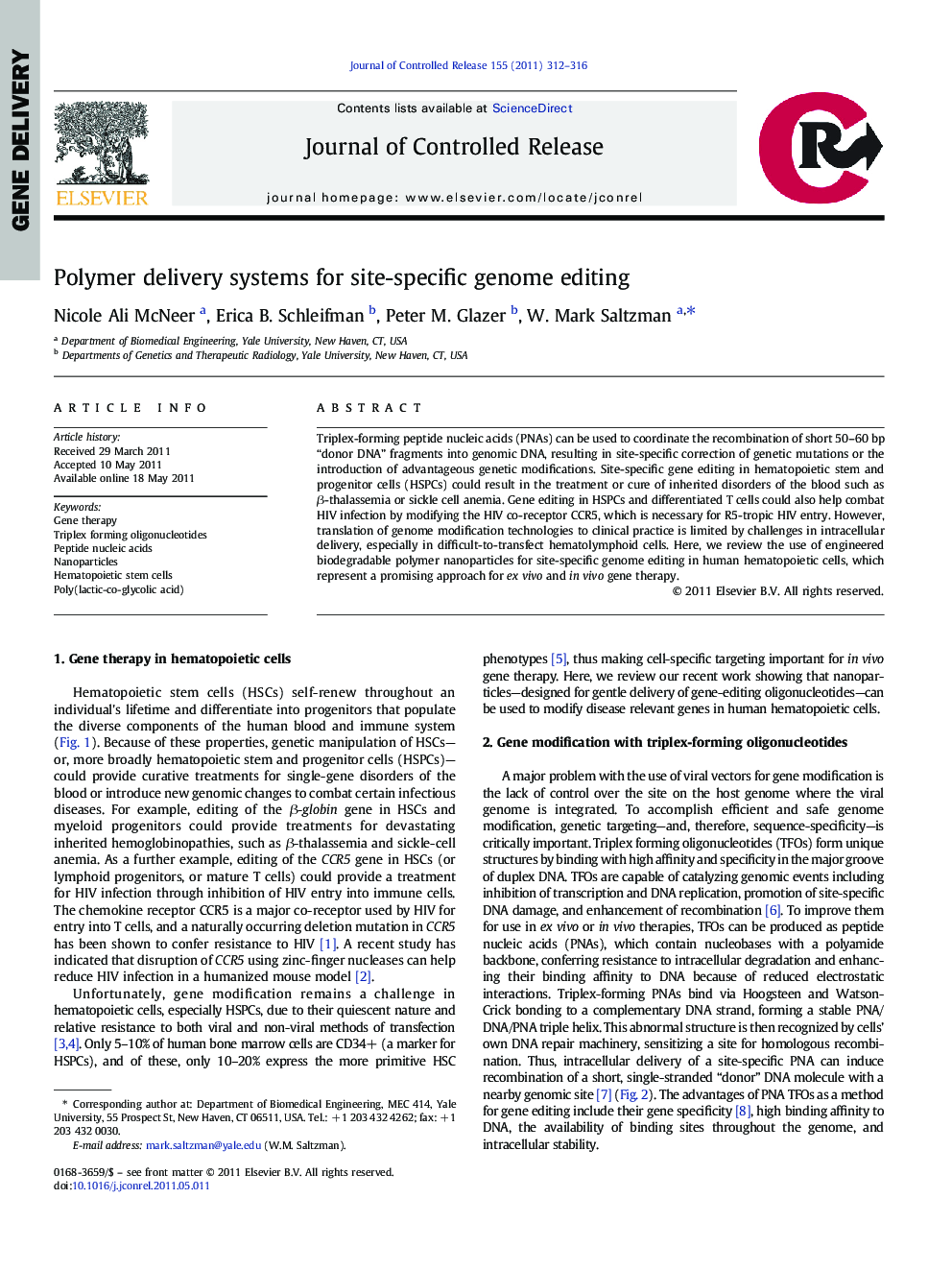| Article ID | Journal | Published Year | Pages | File Type |
|---|---|---|---|---|
| 1424742 | Journal of Controlled Release | 2011 | 5 Pages |
Triplex-forming peptide nucleic acids (PNAs) can be used to coordinate the recombination of short 50–60 bp “donor DNA” fragments into genomic DNA, resulting in site-specific correction of genetic mutations or the introduction of advantageous genetic modifications. Site-specific gene editing in hematopoietic stem and progenitor cells (HSPCs) could result in the treatment or cure of inherited disorders of the blood such as β-thalassemia or sickle cell anemia. Gene editing in HSPCs and differentiated T cells could also help combat HIV infection by modifying the HIV co-receptor CCR5, which is necessary for R5-tropic HIV entry. However, translation of genome modification technologies to clinical practice is limited by challenges in intracellular delivery, especially in difficult-to-transfect hematolymphoid cells. Here, we review the use of engineered biodegradable polymer nanoparticles for site-specific genome editing in human hematopoietic cells, which represent a promising approach for ex vivo and in vivo gene therapy.
Graphical abstractFigure optionsDownload full-size imageDownload as PowerPoint slide
